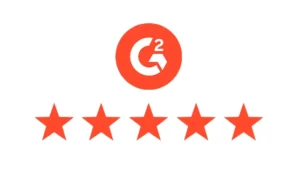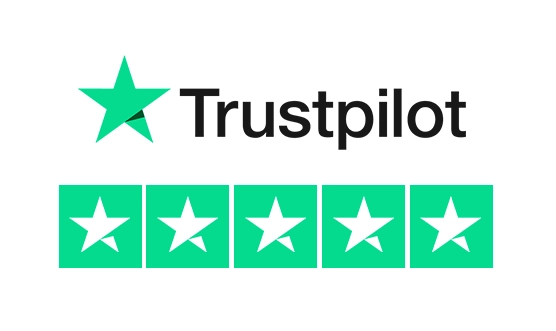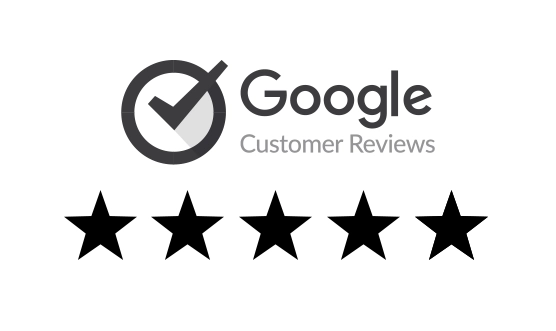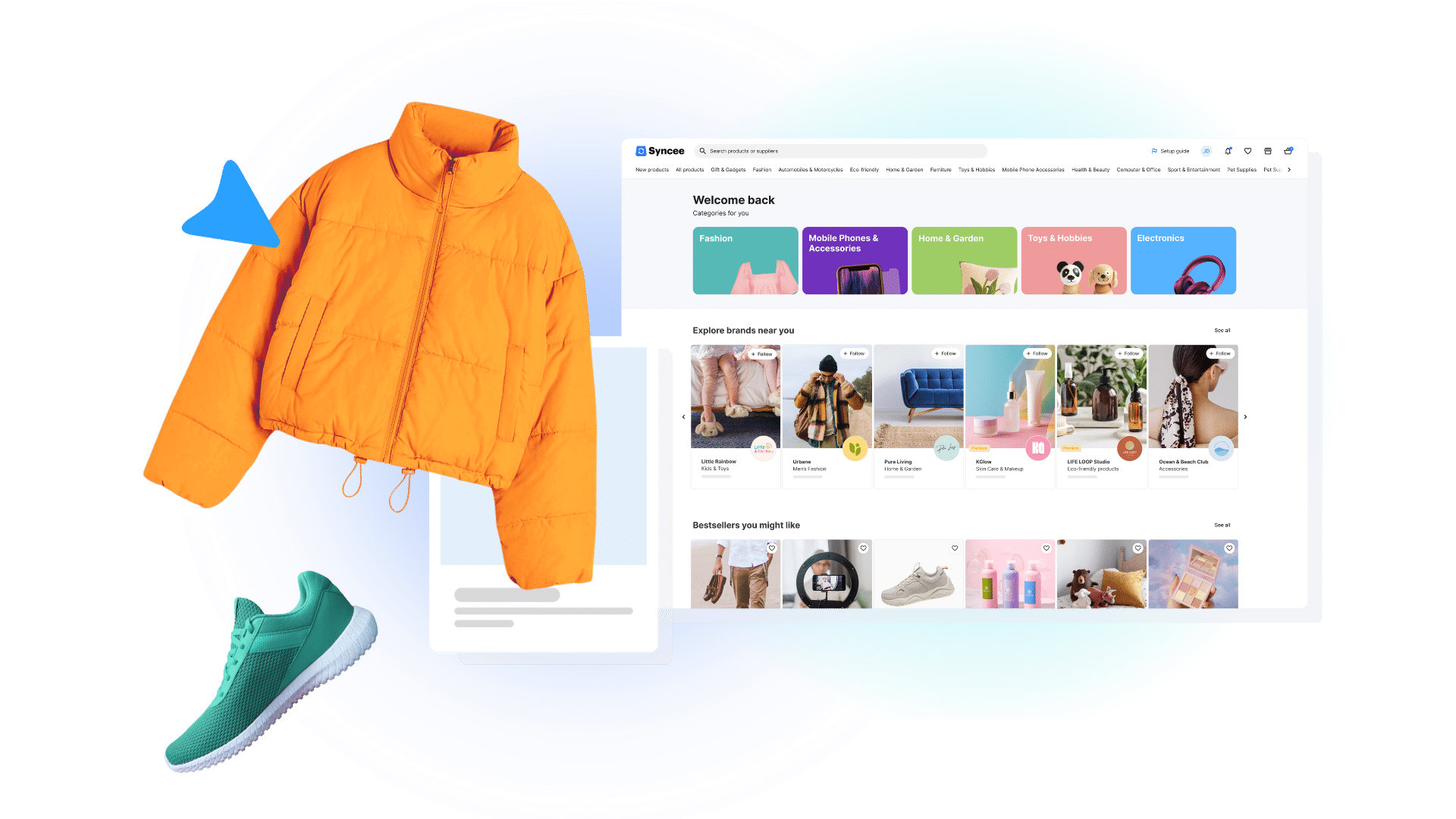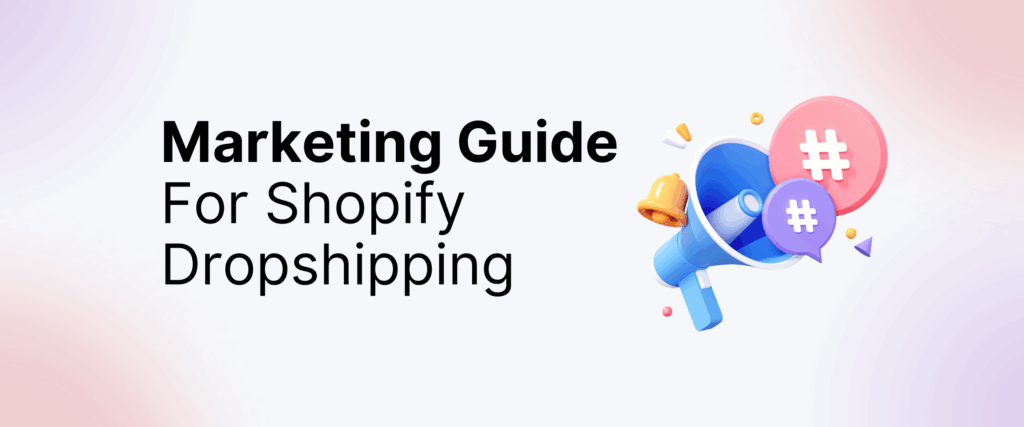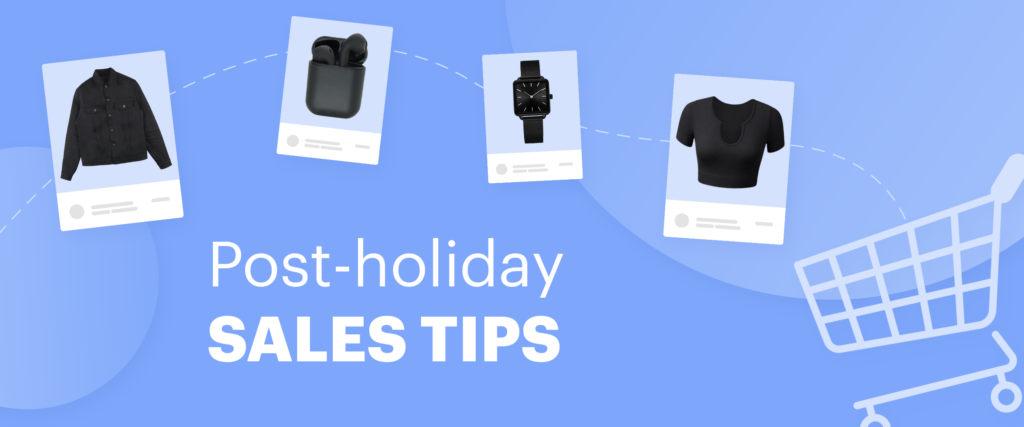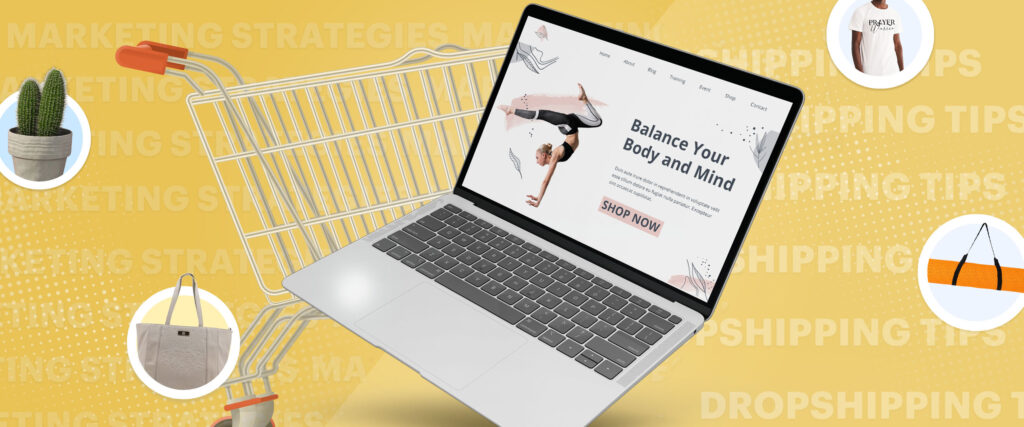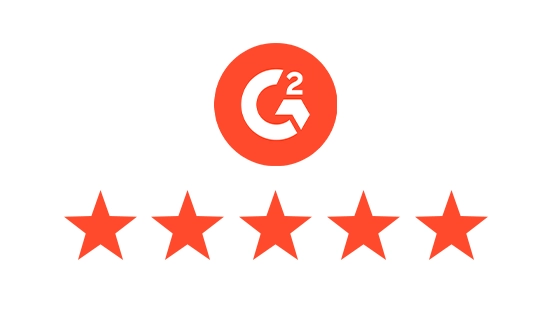Imagine opening a physical store in town — but no one walks in. Would you expect any sales? Absolutely not. Your online store works the same way: no traffic means no sales. You need to drive traffic to your online store to even have a chance at converting visitors into customers. But not just any traffic — targeted, converting, profitable traffic. In this guide, we’ll explore why traffic matters, how to understand and improve conversions, how to track visitor data in Shopify and Google Analytics, and how to turn that traffic into revenue.
If you want to build a successful dropshipping business, you need more than just a great product and a functional website. You need visibility. You need to drive traffic to your online store — consistently, strategically, and with a clear understanding of what that traffic means for your bottom line. Without traffic, you’re not running a business — you’re hosting a website no one visits. This is the silent killer of new online stores: they simply aren’t getting enough eyes on their products. Whether you’re running ads, using influencers, or optimizing your SEO, bringing in the right kind of visitors is what transforms a passive store into a revenue-generating engine.

Why Traffic Is Essential for Your Online Store
Traffic is the very first stage of your online business funnel. Without it, nothing else matters. You could have the best product selection, the most beautiful design, and competitive pricing — but if no one sees your site, your conversion rate remains 0%.
Think of it like this: If you opened a gorgeous boutique in the middle of the desert where no one ever passes by, how many sales would you make? Now imagine placing the same store in the busiest part of town. Traffic doesn’t guarantee success, but it certainly gives you a chance at it.
And in ecommerce, this isn’t just a metaphor. You can measure every step — from how many people visit your store, to how many of them click “Add to Cart,” and how many follow through to purchase. But none of that happens until you drive traffic to your online store — consistently and strategically.
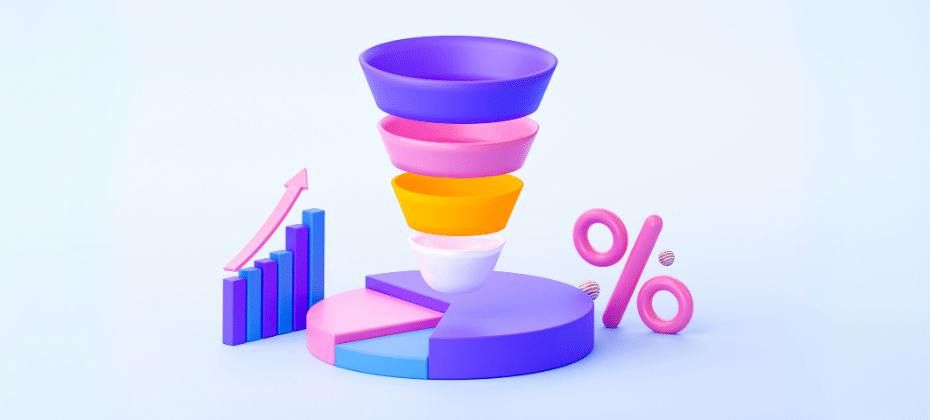
How to Drive Traffic to Your Online Store
In today’s competitive ecommerce world, it’s not enough to simply launch your store—you need a strategic approach to drive traffic to your online store and turn that traffic into loyal, paying customers.
- Paid Advertising
- Facebook & Instagram Ads (great for visual products)
- Google Search Ads (intent-based)
- TikTok Ads (for Gen Z & trending items)
- SEO
- Optimize product titles, descriptions, and metadata
- Start a blog with relevant keywords
- Use tools like Ubersuggest or Ahrefs to find search terms
- Email Marketing
- Build a list with popups and lead magnets
- Send regular promotions, new arrivals, or blog content
- Influencer Marketing
- Partner with niche influencers
- Focus on micro-influencers for better engagement
- Social Media Engagement
- Post daily
- Use trending audio
- Link your store in bio
- Content Marketing
- Write valuable blog posts that answer your target audience’s questions
- Create downloadable resources like guides or checklists
- Repurpose long-form content into infographics, social posts, or videos
- Pinterest Traffic
- Create visually appealing Pins that link back to your product pages
- Use keyword-rich descriptions and boards
- Pin regularly and join group boards in your niche
- List Your Store on Google Shopping
- Google Shopping places your products in front of buyers actively searching for them
- Set up your product feed through your ecommerce platform
- This taps into high-intent search traffic — already ready to buy
- YouTube Marketing
- Create how-to videos, product demos, or unboxing videos
- Include links to your store in video descriptions and pinned comments
- Use SEO-friendly titles and tags to appear in search results
- Marketplace Presence
- List your products on additional platforms like Etsy or Amazon to increase discoverability
- Direct traffic from those listings to your main store through packaging inserts or customer service
- As an extra idea, list your products on Syncee, and connect with other stores that will resell your products thus driving you more profit
Don’t underestimate the power of consistent, engaging content across your social platforms. Every story, reel, or post is an opportunity to drive traffic to your online store and connect with potential customers in a meaningful way.
What Is a Conversion?
Let’s clarify something that many beginners find confusing. A conversion is when a visitor completes a desired action on your site. In most cases, that means making a purchase. But it could also be signing up for your email list, downloading a free guide, or adding a product to the cart.
Your conversion rate is the percentage of visitors who take that action in a certain period (eg. a day):
Conversion Rate = (Number of Orders ÷ Number of Visitors) × 100
For example:
- 1,000 daily visitors
- 10 daily purchases
- Conversion rate = 1%
So, if 1,000 people visit your store and 10 of them place an order, your conversion rate is 1%. In the world of ecommerce, a 1–3% conversion rate is considered average. That means the other 97–99% of people leave without buying. This is why it’s not enough to simply drive traffic to your online store — you also need to focus on converting that traffic once it arrives.
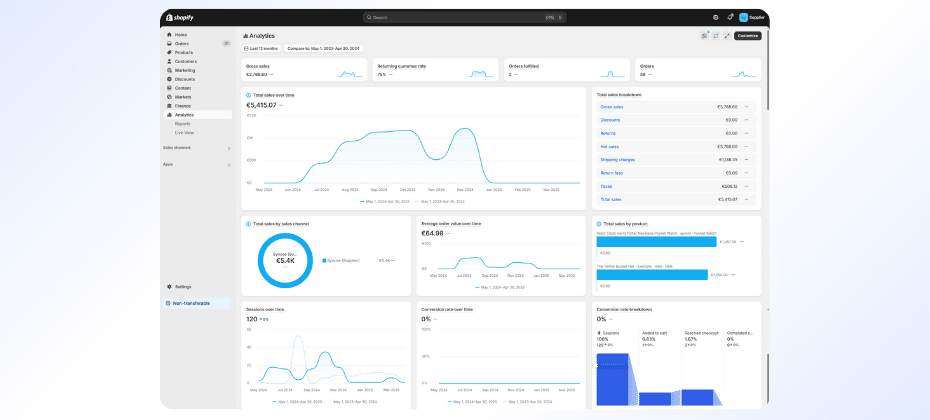
This is why both quantity and quality of traffic matter. It’s not just about getting as many people as possible — it’s about getting the right people to your store and then converting them.
Even if you’re generating a lot of traffic, without conversions, you’re just burning money on ads. That’s why it’s equally important to track and improve your conversion rate — especially as you drive traffic to your online store through paid or organic channels.
How to See How Much Traffic Your Store Gets
Tracking your traffic is the first step to improving it. Without real data, you’re flying blind. Luckily, Shopify and Google Analytics provide powerful tools for understanding your website performance.
In Shopify Admin
Shopify has built-in reports that let you see your traffic in real-time:
- Log in to your Shopify Admin dashboard.
- Click on Analytics in the left-hand menu.
- Choose Reports, then open Sessions over time or Sessions by referrer.
- Here, you’ll see the number of visitors, top channels (like Facebook or Google), and device types.
This is an easy way to spot trends and know whether your marketing efforts are paying off.
Using Google Analytics (GA4)
For deeper insights, connect your store to Google Analytics. Once set up, GA gives you a full view of your customers’ behavior.
- Open Google Analytics and log in.
- Navigate to Reports > Acquisition > Traffic acquisition.
- Here, you can view:
- How users arrive (ads, organic, social)
- What pages they visit
- How long they stay
- Conversion paths (if configured)
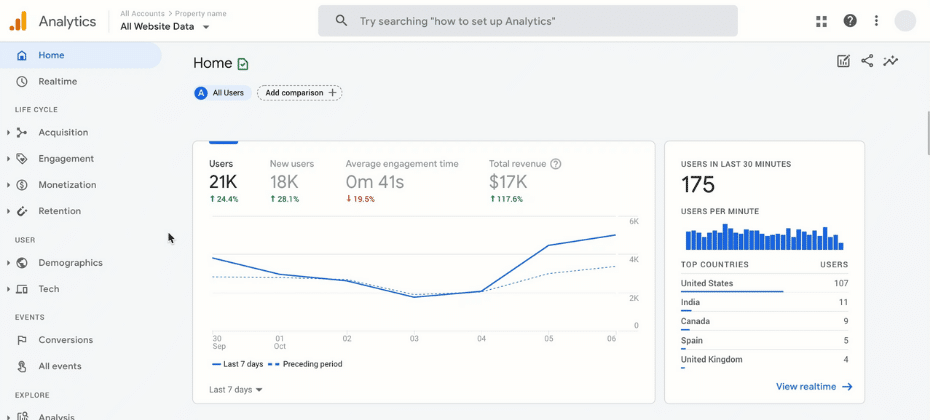
With this data, you can begin asking smart questions like: Which traffic source brings the most engaged users? Where are people dropping off? And most importantly: How can I fix it?
Marketing Calculations
Now we should examine why traffic + conversion = sales. Let’s run a practical example:
| Metric | Value |
| Daily Visitors | 1,000 |
| Conversion Rate | 1% |
| Orders | 10 |
| Average Order Value (AOV) | $50 |
| Revenue | 10 × $50 = $500 |
| Profit Margin | 30% |
| Profit Before Ads | $500 × 0.3 = $150 |
Seems good, right? But how much did you pay to get those 1,000 visitors a day?
If you’re using paid ads, here are typical Cost Per Click (CPC) averages:
| Platform | Avg. Cost per Click (CPC) |
| Facebook Ads | $0.80 – $1.20 |
| Instagram Ads | $1.00 – $1.50 |
| Google Ads | $1.50 – $2.50 |
To get 1,000 visitors a day:
- Facebook: ~$1,000
- Google: ~$2,000
If you earn $150 but spend $1,000 on ads — that’s a $850 loss.
This is a perfect example of why you must not only drive traffic to your online store, but make sure it’s the right traffic — qualified, targeted, and ready to convert. Without a strategy to balance traffic costs and conversion value, your store could generate a lot of activity but still lose money.
This is why traffic alone is not enough. You need it to be profitable traffic.
What If You Improve Your Conversion Rate?
Let’s boost the conversion rate to 3%:
- Orders per day: 30
- Revenue: $1,500
- Profit before ads (30% margin): $450
- Ad spend (1,000 visitors at $1 each): $1,000
- Net loss: $550
This clearly shows that even when you improve your conversion rate, profitability still depends on how efficiently you drive traffic to your online store. If the cost of traffic outweighs your revenue gains, your business can’t grow — no matter how well your store converts.
Now let’s say you cut your CPC to $0.30 (better targeting, cheaper platform):
- Ad cost: $300
- Net profit: $450 – $300 = $150
Profit achieved! Conclusion: You can increase profitability by:
- Increasing conversion rate
- Lowering traffic costs
- Boosting product margins
Try It Yourself: Dropshipping Profit Calculator
Understanding the numbers is one thing — but seeing how they play out in your own business is even better. That’s why we created an easy-to-use calculator to help you visualize your potential profits or losses based on key metrics.
Whether you’re just starting out or running ad campaigns already, this tool helps you estimate.
Marketing Strategy and Profit Calculator
This calculator helps you estimate the profitability of your online store. Enter the number of daily visitors, your conversion rate, your average order value (total revenue ÷ number of orders), the profit margin per order, and the daily advertising cost. The calculator will show your profit.
Example: If on a day you have 1000 visitors, 1% Conversion Rate (10 orders), $50 AOV, 30% Profit Margin and $150 ad spend, you’ll see you make $50 profit.
Ways to Increase Your Conversion Rate
One of the fastest ways to improve profitability is by increasing your conversion rate. Instead of spending more on ads, make better use of the visitors you already have.
Here are a few effective strategies:
1. Improve Your Store Design
A fast, responsive, and well-designed site builds trust instantly. Use clean layouts, clear product images, and a consistent brand message. Your site should load quickly and look great on mobile devices.
- Mobile-optimized theme
- Clear CTAs (Buy Now, Add to Cart)
- Fast loading (under 3s)
2. Build Trust with Visitors
Most people don’t buy the first time they visit. To overcome this hesitation:
- Use real customer reviews and testimonials
- Display security badges and guarantees
- Clearly state your return and shipping policies
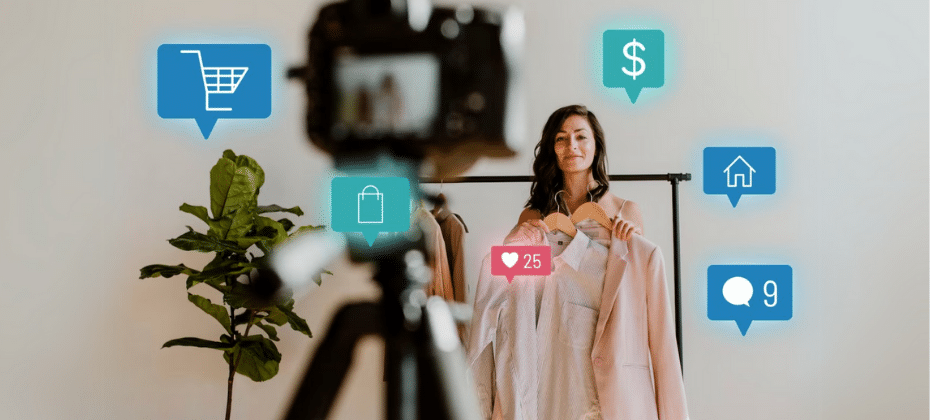
3. Optimize Product Pages
Your product pages should do more than list features — they should sell. Use benefit-driven copy, lifestyle images, explainer videos, and urgency tactics like “Only 3 left!”
- Multiple images, videos
- Clear benefits
- Scarcity and urgency
4. Simplify the Checkout Process
Make it as easy as possible to buy. A smooth checkout experience helps you convert visitors into customers more effectively. Once you drive traffic to your online store, the goal is to eliminate any friction that could prevent a sale.
- Enable guest checkout to streamline the process
- Limit the steps to just 1–2 to reduce drop-offs
- Provide multiple secure and familiar payment options
5. Recover Lost Sales
Don’t let potential revenue slip away—re-engage your visitors. Not every shopper completes their purchase on the first visit. Use smart tools and messaging to bring them back and recover sales opportunities.
- Send abandoned cart emails with reminders or incentives
- Show exit-intent popups to capture attention before they leave
- Launch retargeting ads to re-engage visitors on other platforms
6. Personalize the Shopping Experience
Tailor the user experience based on visitor behavior and preferences. Personalization helps shoppers feel more connected to your store, increasing the likelihood of purchase.
- Use browsing and purchase history to suggest relevant products
- Display dynamic content (like “You may also like”)
- Offer personalized discounts via email or on-site popups
7. Offer Limited-Time Deals and Flash Sales
Urgency drives action. Limited-time offers encourage visitors to act fast rather than delay.
- Use countdown timers on product or homepage banners
- Highlight flash deals or daily specials
- Promote exclusivity: “Only available today” or “Members-only offer”
8. Add Social Proof Beyond Reviews
Seeing others engage with or purchase your product builds trust and credibility.
- Show recent purchases or visitor activity (“Anna from NY just bought this!”)
- Use customer photos (UGC) in product galleries
- Highlight “Best Sellers” and “Most Popular” sections
9. Provide a Loyalty or Referral Program
Rewarding repeat purchases or referrals keeps your customers coming back while encouraging word-of-mouth growth. Referral programs are also a cost-effective way to drive traffic to your online store, as happy customers bring in new ones who are more likely to convert.
- Offer points for purchases, reviews, or social sharing
- Provide discount codes for referring friends
- Highlight savings for returning customers during checkout

Why You Should Sell High-Margin Products
Selling low-cost, low-margin products can work — but it requires huge traffic volumes and razor-thin margins. If your profit per sale is only $5, even a few cents increase in ad cost can wipe out your earnings. When you drive traffic to your online store, having high-margin products gives you more flexibility and a better chance at profitability — especially if you’re investing in paid advertising.
Instead, focus on high-margin products that allow you to:
- Spend more on acquiring customers.
- Bundle items to increase order value.
- Offer discounts while still maintaining profit.
Suggested High-Margin Product Categories:
- Home Decor: Trendy, perceived value is high
- Pet Accessories: Emotional buy, loyal customer base
- Fitness Equipment: Niche + high repeat potential
- Beauty Devices: Skincare tools have large markups
- Travel Gear: People pay more for comfort & utility
- Kitchen Accessories: Everyday tools with a twist — people love clever, time-saving items that make cooking easier and more fun.
These categories have high perceived value, less price sensitivity, and great upselling potential — making it easier to profit as you drive traffic to your online store.
On Syncee collective dropshipping and wholesale marketplace available on Shopify, you can find quality products to sell in your online store and it helps you easily add the items you love to your store in just a few clicks.

How Syncee Can Help
To make your traffic count, your store needs more than just visits — it needs the right products, reliable operations, and a professional presentation that builds trust. Syncee is a collective dropshipping and wholesale marketplace, available as an app in the Shopify App Store, and it gives you all the tools to not only manage your products efficiently but also support your efforts to drive traffic to your online store in a way that converts.
With Syncee, you can:
- Find and import high-quality products from reliable local and global suppliers. By offering the right products, you’re more likely to keep visitors engaged and interested in purchasing.
- Use ready-made product listings with clean descriptions, professional photos, and pricing information that makes your store look polished from the start — a key factor for increasing conversions.
- Sync inventory and prices automatically, so your store always reflects real availability and avoids the trust-breaking issue of selling out-of-stock items.
- Save time on manual updates, letting you focus more on marketing, content, and strategies that attract and convert visitors.
- Filter and curate your product catalog to match your audience and niche, giving you a sharper edge in targeting specific customer groups.
Syncee helps you run a more professional, trustworthy store while aligning with your broader traffic and sales goals. By combining high-quality products with automation and supplier control, you can create an ecommerce experience that’s optimized to convert — not just attract — your visitors.
Final Thoughts: Strategy Over Luck
If you’re serious about building a sustainable dropshipping business, don’t leave traffic or conversions to chance. Be intentional. Drive targeted visitors, convert them with smart design and offers, and choose products that give you room to grow — all while building a reliable store that supports long-term success.
Here’s your action list to turn strategy into results:
- Drive traffic to your online store using both paid and organic channels. Combine short-term tactics like social media ads with long-term efforts like SEO and content marketing.
- Track your visitors and their behavior with tools like Shopify analytics and Google Analytics. Understand where your traffic comes from, what pages perform best, and where you’re losing potential buyers.
- Optimize your site to increase conversions. From fast load times and mobile-friendly design to compelling CTAs and simplified checkout, small tweaks can make a big difference in how many visitors become customers.
- Focus on high-margin, fast-moving products that align with customer demand. Use data to evaluate performance and ensure your efforts are focused on items with real growth potential.
- Use calculators, data tools, and A/B testing to make smarter decisions. Guesswork can cost you money — insights help you scale profitably.
- Look for ready-to-sell products and leverage automation platforms like Syncee to manage your product catalog, sync inventory automatically, and easily offer high-quality items your customers are actually looking for.
Dropshipping success isn’t magic — it’s a combination of math, marketing, and mindset. With the right tools, traffic, and strategy, you’ll transform your store from quiet and inconsistent to a profitable, scalable sales engine.

Frequently Asked Questions
How much traffic do I need to make sales?
With a 1% conversion rate, 1 sale usually requires 100 visitors. More traffic means more chances to convert — especially if your store is optimized.
What’s the best way to drive traffic to a new store?
Start with Facebook or Google Ads for quick results, and build organic traffic through SEO and social media. Influencer marketing also works well in many niches.
How do I know if my traffic is high quality?
Check metrics like conversion rate, bounce rate, and time on site. If people leave quickly or don’t buy, your traffic may be poorly targeted.
Why am I getting traffic but no sales?
Your site might need better design, well-written product descriptions, or trust elements like reviews. Even small fixes can boost conversions.



